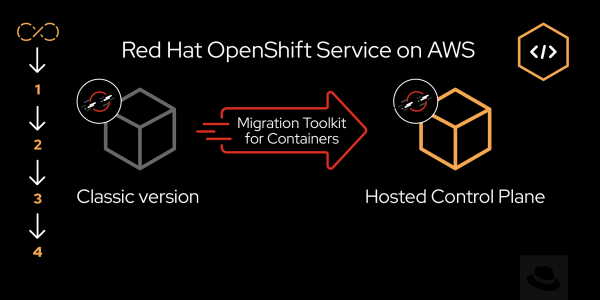Overview: Transitioning to ROSA HCP from ROSA classic simplified with MTC
Red Hat OpenShift Service on AWS (ROSA) is a fully managed application platform for building, deploying, and scaling cloud-native applications in a native Amazon Web Services (AWS) environment. ROSA now offers two cluster deployment models: ROSA classic and ROSA with hosted control planes (HCP).
With the hosted control planes deployment option, each cluster has a dedicated control plane that is hosted in a ROSA service AWS account, rather than your own AWS account (as with the ROSA classic model). This provides significant operational cost reductions and enhanced management capabilities, offering a compelling reason to migrate your workloads from ROSA classic to ROSA with HCP.
This learning path walks through how to migrate from ROSA classic to ROSA with HCP using Red Hat’s migration toolkit for containers (MTC). Throughout the migration process, you’ll examine MTC’s components, capabilities, and its role in simplifying the migration journey. You will navigate through the key components, migration types, methodologies, and practical steps involved in this migration.
Throughout the course of this learning path, you will transition from theoretical understanding to practical implementation, equipped with the knowledge necessary for orchestrating successful migrations from ROSA classic to ROSA with hosted control planes using MTC.
Prerequisites
- Two ROSA clusters, ideally one HCP cluster and one classic cluster
- AWS S3 bucket (with Access Key and Secret Access Key to access the bucket)
- Latest OpenShift CLI (older versions may not work properly)
Make sure all AWS resources are created in the same Availability Zone (AZ).
In this learning path, you will learn:
- The functionalities of MTC, including its role in facilitating the seamless migration of application workloads between clusters, right down to the namespace level.
- Migration types, migration strategies, direct vs. indirect migration, and data copy methods.
- The step-by-step process of installing and configuring MTC on both control and remote clusters.
- How to migrate stateless and stateful applications.
- The possibilities of using MTC with a multi-cluster environment.

